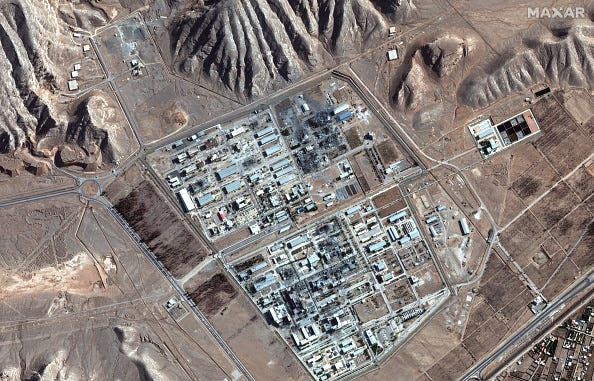Economy
The Net-Zero Dream Is Unravelling And The Consequences Are Global
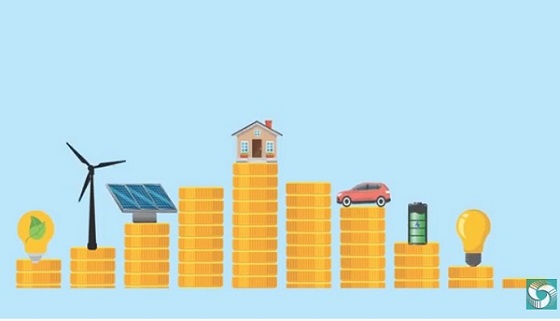
From the Frontier Centre for Public Policy
The grand net-zero vision is fading as financial giants withdraw from global climate alliances
In recent years, governments and Financial institutions worldwide have committed to the goal of “net zero”—cutting greenhouse gas emissions to as close to zero as possible by 2050. One of the most prominent initiatives, the Glasgow Financial Alliance for Net Zero (GFANZ), sought to mobilize trillions of dollars by shifting investment away from fossil fuels and toward green energy projects.
The idea was simple in principle: make climate action a core part of financial decision-making worldwide.
The vision of a net-zero future, once championed as an inevitable path to global prosperity and environmental sustainability, is faltering. What began as an ambitious effort to embed climate goals into the flow of international capital is now encountering hard economic and political realities.
By redefining financial risk to include climate considerations, GFANZ aimed to steer financial institutions toward supporting a large-scale energy transition.
Banks and investors were encouraged to treat climate-related risks—such as the future decline of fossil fuels—as central to their financial strategies.
But the practical challenges of this approach have become increasingly clear.
Many of the green energy projects promoted under the net-zero banner have proven financially precarious without substantial government subsidies. Wind and solar technologies often rely on public funding and incentives to stay competitive. Energy storage and infrastructure upgrades, critical to supporting renewable energy, have also required massive financial support from taxpayers.
At the same time, institutions that initially embraced net-zero commitments are now facing soaring compliance costs, legal uncertainties and growing political resistance, particularly in major economies.
Major banks such as JPMorgan Chase, Citigroup and Goldman Sachs have withdrawn from GFANZ, citing concerns over operational risks and conflicting fuduciary duties. Their departure marks a signifcant blow to the alliance and signals a broader reassessment of climate finance strategies.
For many institutions, the initial hope that governments and markets would align smoothly around net-zero targets has given way to concerns over financial instability and competitive disadvantage. But that optimism has faded.
What once appeared to be a globally co-ordinated movement is fracturing. The early momentum behind net-zero policies was fuelled by optimism that government incentives and public support would ease the transition. But as energy prices climb and affordability concerns grow, public opinion has become noticeably more cautious.
Consumers facing higher heating bills and fuel costs are beginning to question the personal price of aggressive climate action.
Voters are increasingly asking whether these policies are delivering tangible benefits to their daily lives. They see rising costs in transportation, food production and home energy use and are wondering whether the promised green transition is worth the economic strain.
This moment of reckoning offers a crucial lesson: while environmental goals remain important, they must be pursued in balance with economic realities and the need for reliable energy supplies. A durable transition requires market-based solutions, technological innovation and policies that respect the complex needs of modern economies.
Climate progress will not succeed if it comes at the expense of basic affordability and economic stability.
Rather than abandoning climate objectives altogether, many countries and industries are recalibrating, moving away from rigid frameworks in favour of more pragmatic, adaptable strategies. Flexibility is becoming essential as governments seek to maintain public support while still advancing long term environmental goals.
The unwinding of GFANZ underscores the risks of over-centralized approaches to climate policy. Ambitious global visions must be grounded in reality, or they risk becoming liabilities rather than solutions. Co-ordinated international action remains important, but it must leave room for local realities and diverse economic circumstances.
As the world adjusts course, Canada and other energy-producing nations face a clear choice: continue down an economically restrictive path or embrace a balanced strategy that safeguards both prosperity and environmental stewardship. For countries like Canada, where natural resources remain a cornerstone of the economy, the stakes could not be higher.
The collapse of the net-zero consensus is not an end to climate action, but it is a wake-up call. The future will belong to those who learn from this moment and pursue practical, sustainable paths forward. A balanced approach that integrates environmental responsibility with economic pragmatism offers the best hope for lasting progress.
Marco Navarro-Genie is the vice president of research at the Frontier Centre for Public Policy. With Barry Cooper, he is coauthor of Canada’s COVID: The Story of a Pandemic Moral Panic (2023).
Business
Trump confirms 35% tariff on Canada, warns more could come

Quick Hit:
President Trump on Thursday confirmed a sweeping new 35% tariff on Canadian imports starting August 1, citing Canada’s failure to curb fentanyl trafficking and retaliatory trade actions.
Key Details:
- In a letter to Canadian Prime Minister Mark Carney, Trump said the new 35% levy is in response to Canada’s “financial retaliation” and its inability to stop fentanyl from reaching the U.S.
- Trump emphasized that Canadian businesses that relocate manufacturing to the U.S. will be exempt and promised expedited approvals for such moves.
- The administration has already notified 23 countries of impending tariffs following the expiration of a 90-day negotiation window under Trump’s “Liberation Day” trade policy.
Diving Deeper:
President Trump escalated his tariff strategy on Thursday, formally announcing a 35% duty on all Canadian imports effective August 1. The move follows what Trump described as a breakdown in trade cooperation and a failure by Canada to address its role in the U.S. fentanyl crisis.
“It is a Great Honor for me to send you this letter in that it demonstrates the strength and commitment of our Trading Relationship,” Trump wrote to Prime Minister Mark Carney. He added that the tariff response comes after Canada “financially retaliated” against the U.S. rather than working to resolve the flow of fentanyl across the northern border.
Trump’s letter made clear the tariff will apply broadly, separate from any existing sector-specific levies, and included a warning that “goods transshipped to evade this higher Tariff will be subject to that higher Tariff.” The president also hinted that further retaliation from Canada could push rates even higher.
However, Trump left the door open for possible revisions. “If Canada works with me to stop the flow of Fentanyl, we will, perhaps, consider an adjustment to this letter,” he said, adding that tariffs “may be modified, upward or downward, depending on our relationship.”
Canadian companies that move operations to the U.S. would be exempt, Trump said, noting his administration “will do everything possible to get approvals quickly, professionally, and routinely — In other words, in a matter of weeks.”
The U.S. traded over $762 billion in goods with Canada in 2024, with a trade deficit of $63.3 billion, a figure Trump called a “major threat” to both the economy and national security.
Speaking with NBC News on Thursday, Trump suggested even broader tariff hikes are coming, floating the idea of a 15% or 20% blanket rate on all imports. “We’re just going to say all of the remaining countries are going to pay,” he told Meet the Press moderator Kristen Welker, adding that “the tariffs have been very well-received” and noting that the stock market had hit new highs that day.
The Canadian announcement is part of a broader global tariff rollout. In recent days, Trump has notified at least 23 countries of new levies and revealed a separate 50% tariff on copper imports.
“Not everybody has to get a letter,” Trump said when asked if other leaders would be formally notified. “You know that. We’re just setting our tariffs.”
Business
UN’s ‘Plastics Treaty’ Sports A Junk Science Wrapper
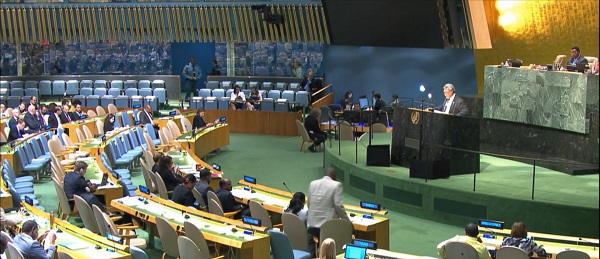

From the Daily Caller News Foundation
By Craig Rucker
According to a study in Science Advances, over 90% of ocean plastic comes from just 10 rivers, eight of which are in Asia. The United States, by contrast, contributes less than 1%. Yet Pew treats all nations as equally responsible, promoting one-size-fits-all policies that fail to address the real source of the issue.
Just as people were beginning to breathe a sigh of relief thanks to the Trump administration’s rollback of onerous climate policies, the United Nations is set to finalize a legally binding Global Plastics Treaty by the end of the year that will impose new regulations, and, ultimately higher costs, on one of the world’s most widely used products.
Plastics – derived from petroleum – are found in everything from water bottles, tea bags, and food packaging to syringes, IV tubes, prosthetics, and underground water pipes. In justifying the goal of its treaty to regulate “the entire life cycle of plastic – from upstream production to downstream waste,” the U.N. has put a bull’s eye on plastic waste. “An estimated 18 to 20 percent of global plastic waste ends up in the ocean,” the UN says.
As delegates from over 170 countries prepare for the final round of negotiations in Geneva next month, debate is intensifying over the future of plastic production, regulation, and innovation. With proposals ranging from sweeping bans on single-use plastics to caps on virgin plastic output, policymakers are increasingly citing the 2020 Pew Charitable Trusts report, Breaking the Plastic Wave, as one of the primary justifications.
But many of the dire warnings made in this report, if scrutinized, ring as hollow as an empty PET soda bottle. Indeed, a closer look reveals Pew’s report is less a roadmap to progress than a glossy piece of junk science propaganda—built on false assumptions and misguided solutions.
Pew’s core claim is dire: without urgent global action, plastic entering the oceans will triple by 2040. But this alarmist forecast glosses over a fundamental fact—plastic pollution is not a global problem in equal measure. According to a study in Science Advances, over 90% of ocean plastic comes from just 10 rivers, eight of which are in Asia. The United States, by contrast, contributes less than 1%. Yet Pew treats all nations as equally responsible, promoting one-size-fits-all policies that fail to address the real source of the issue.
This blind spot has serious consequences. Pew’s solutions—cutting plastic production, phasing out single-use items, and implementing rigid global regulations—miss the mark entirely. Banning straws in the U.S. or taxing packaging in Europe won’t stop waste from being dumped into rivers in countries with little or no waste infrastructure. Policies targeting Western consumption don’t solve the problem—they simply shift it or, worse, stifle useful innovation.
The real tragedy isn’t plastic itself, but the mismanagement of plastic waste—and the regulatory stranglehold that blocks better solutions. In many countries, recycling is a government-run monopoly with little incentive to innovate. Meanwhile, private-sector entrepreneurs working on advanced recycling, biodegradable materials, and AI-powered sorting systems face burdensome red tape and market distortion.
Pew pays lip service to innovation but ultimately favors centralized planning and control. That’s a mistake. Time and again, it’s been technology—not top-down mandates—that has delivered environmental breakthroughs.
What the world needs is not another top-down, bureaucratic report like Pew’s, but an open dialogue among experts, entrepreneurs, and the public where new ideas can flourish. Imagine small-scale pyrolysis units that convert waste into fuel in remote villages, or decentralized recycling centers that empower informal waste collectors. These ideas are already in development—but they’re being sidelined by policymakers fixated on bans and quotas.
Worse still, efforts to demonize plastic often ignore its benefits. Plastic is lightweight, durable, and often more environmentally efficient than alternatives like glass or aluminum. The problem isn’t the material—it’s how it has been managed after its use. That’s a “systems” failure, not a material flaw.
Breaking the Plastic Wave champions a top-down, bureaucratic vision that limits choice, discourages private innovation, and rewards entrenched interests under the guise of environmentalism. Many of the groups calling for bans are also lobbying for subsidies and regulatory frameworks that benefit their own agendas—while pushing out disruptive newcomers.
With the UN expected to finalize the treaty by early 2026, nations will have to face the question of ratification. Even if the Trump White House refuses to sign the treaty – which is likely – ordinary Americans could still feel the sting of this ill-advised scheme. Manufacturers of life-saving plastic medical devices, for example, are part of a network of global suppliers. Companies located in countries that ratify the treaty will have no choice but to pass the higher costs along, and Americans will not be spared.
Ultimately, the marketplace of ideas—not the offices of policy NGOs—will deliver the solutions we need. It’s time to break the wave of junk science—not ride it.
Craig Rucker is president of the Committee For A Constructive Tomorrow (www.CFACT.org).
-
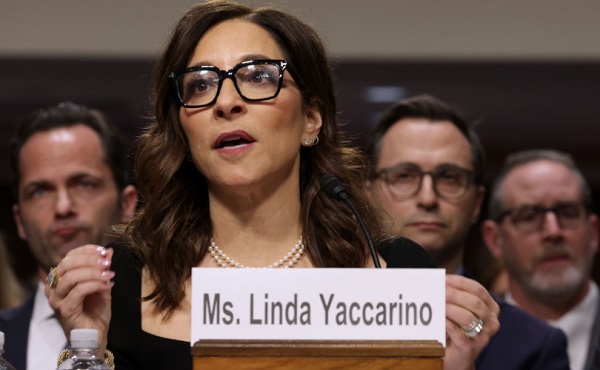
 Business2 days ago
Business2 days agoWEF-linked Linda Yaccarino to step down as CEO of X
-

 Automotive2 days ago
Automotive2 days agoAmerica’s EV Industry Must Now Compete On A Level Playing Field
-

 Business2 days ago
Business2 days ago‘Experts’ Warned Free Markets Would Ruin Argentina — Looks Like They Were Dead Wrong
-

 International2 days ago
International2 days agoSecret Service suspends six agents nearly a year after Trump assassination attempt
-
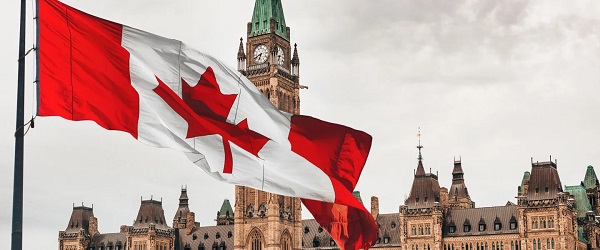
 Business1 day ago
Business1 day agoCarney government should recognize that private sector drives Canada’s economy
-

 Bruce Dowbiggin1 day ago
Bruce Dowbiggin1 day agoThe Covid 19 Disaster: When Do We Get The Apologies?
-

 Alberta1 day ago
Alberta1 day agoFourteen regional advisory councils will shape health care planning and delivery in Alberta
-

 Alberta1 day ago
Alberta1 day agoAlberta school boards required to meet new standards for school library materials with regard to sexual content

